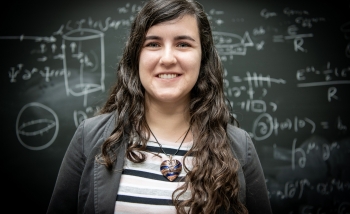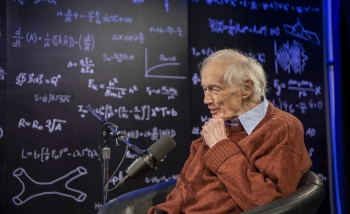Bianca Dittrich’s path was neither easy nor obvious. Growing up in East Germany in a time of political turmoil, she took an early interest in history. The wealth of stories told from various perspectives was intriguing, but their subjectivity troubled her: all stories, in the end, were coloured by interpretations.
Science offered a more objective means to learn about the world. She considered a career in geo-ecology, a field that also appealed to her love of nature and the environment. Her parents, however, encouraged her to choose an “employable” career in medicine or to focus on her athletic talents with competitive tennis.
But Dittrich sought wider horizons. “In some sense, I wanted, always, to know everything,” she said. Theoretical physics offered the best promise of fulfilling that quest. “Physics is very powerful in explaining many phenomena with few principles.”
Friends and peers cautioned against her choice. “Everyone told me I won’t get a job in doing physics,” she said. What’s more, the problem she found most intriguing, quantum gravity, was widely considered one of the most difficult topics in theoretical physics. “Everyone tells you that you should not do quantum gravity.”
Unfazed by her critics, Dittrich pressed on – not knowing if it would work out, but determined to try.
Though Dittrich is humble about her accomplishments, she distinguished herself as a rising research star from the very start. After completing her PhD in Germany, she came to Perimeter Institute as a postdoctoral fellow and next was awarded a prestigious European Union Marie Curie Fellowship. In 2009, she received a grant from the Max Planck Society in Germany to build a research group at the Albert Einstein Institute. Perimeter recruited her as a faculty member and she came to Waterloo in 2012.
Today, she is a highly respected researcher working on uniting two great theories of physics: quantum mechanics and general relativity.
The two theories have been at odds for nearly 100 years. At the heart of the disagreement is the nature of the fabric of the universe itself. In general relativity, spacetime is smooth and continuous. If you were to zoom in with a microscope to arbitrarily small distances, it should look the same as it does when you zoom out for the larger view. But in quantum theory, at the level of subatomic particles, spacetime is discrete and granular, like pixels in a photograph.
In spearheading the Discretuum to Continuum Initiative at Perimeter, Dittrich is leading efforts at Perimeter to develop the mathematical tools that will be used to bridge the two theories.
Still, not everything has to be difficult. When asked where she gets her best ideas as she grapples with one of physics’ thorniest challenges, she shrugged. “In the shower,” she said. “Or in the bus stop.”
Further exploration
About PI
Perimeter Institute is the world’s largest research hub devoted to theoretical physics. The independent Institute was founded in 1999 to foster breakthroughs in the fundamental understanding of our universe, from the smallest particles to the entire cosmos. Research at Perimeter is motivated by the understanding that fundamental science advances human knowledge and catalyzes innovation, and that today’s theoretical physics is tomorrow’s technology. Located in the Region of Waterloo, the not-for-profit Institute is a unique public-private endeavour, including the Governments of Ontario and Canada, that enables cutting-edge research, trains the next generation of scientific pioneers, and shares the power of physics through award-winning educational outreach and public engagement.
You might be interested in


